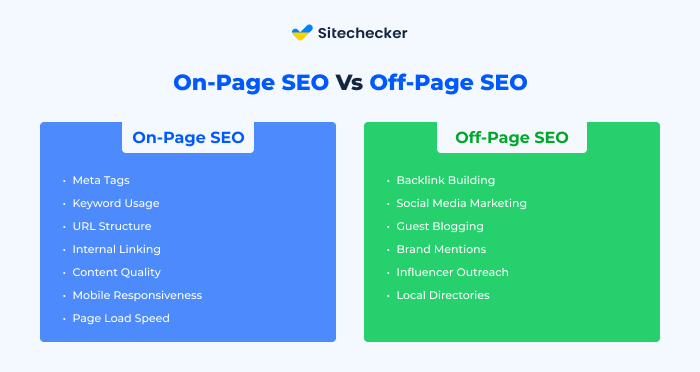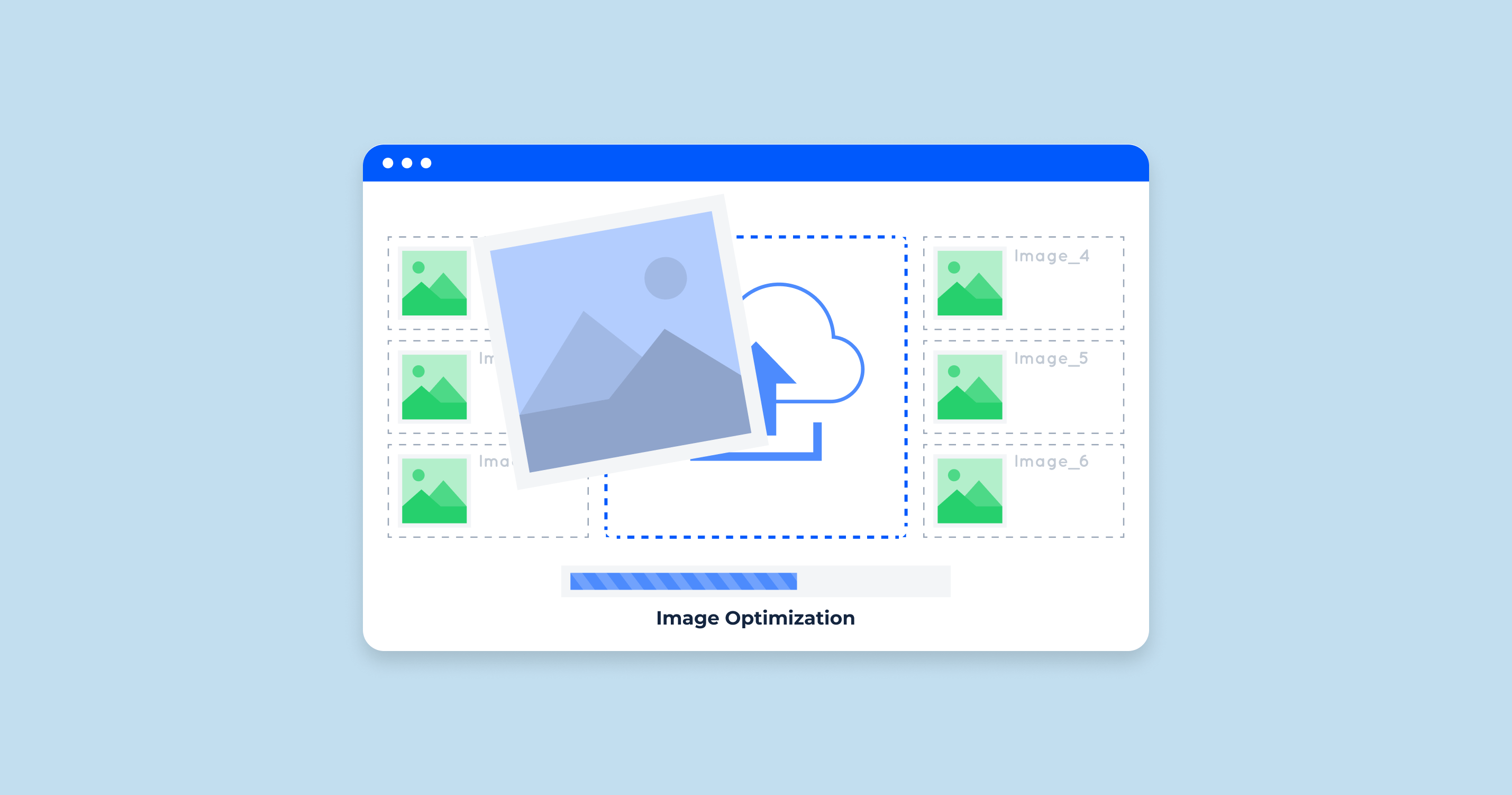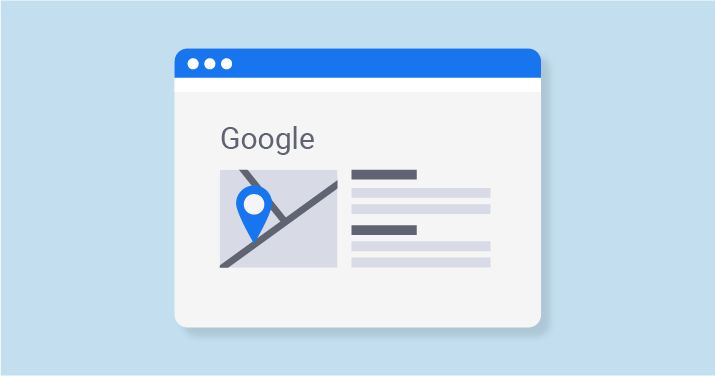What is Website Visibility?
Website visibility is an umbrella term used to describe the prominence and presence of a website or web page in search engine results. It encapsulates a website’s ability to be seen by its target audience, primarily when they input related keywords or queries into search engines like Google, Bing, or Yahoo.
Why Is Website Visibility Important?
- Organic Traffic: A significant chunk of website traffic comes from organic search. If your website ranks high in search results for relevant keywords, you’re more likely to receive consistent, quality traffic.
- Brand Awareness: Higher visibility means more people see and recognize your brand. Over time, this builds trust and establishes your brand as an authority in its niche.
- Lead Generation and Sales: A visible website, when combined with compelling content and effective user experience, can lead to higher lead generation and sales.
Staying Ahead of Competitors: In a competitive digital marketplace, ensuring your website is more visible than authoritative websites of your competitors can be a deciding factor in gaining more business.What Is Website Visibility?
Website visibility is an umbrella term used to describe the prominence and presence of a website or web page in search engine results. It encapsulates a website’s ability to be seen by its target audience, primarily when they input related keywords or queries into search engines like Google, Bing, or Yahoo.
How to Improve Website Visibility
Improving website visibility is about ensuring that your website or webpage garners attention in the vast digital realm, primarily through search engine results. Enhancing this top visibility score requires a combination of on-page, off-page, technical, and strategic efforts. Here are some tried and tested strategies:
| Keyword Research and Optimization | – Conduct Comprehensive Keyword Research: Use tools like Google Keyword Planner, SEMrush, or Ahrefs to identify high-volume and relevant keywords for your niche. – Incorporate Long-Tail Keywords: These are specific keyword phrases that visitors are more likely to use when they’re closer to making a purchase or when they’re using voice search. – Place Keywords Strategically: Ensure your primary keyword appears in your title, meta description, headings, and throughout your content |
| High-Quality Content Creation | – Answer User Queries: Create content that addresses common questions or problems in your niche. – Stay Updated: Regularly update content to keep it relevant and accurate. Outdated content can decrease trust and visibility. – Use Engaging Formats: Infographics, videos, podcasts, and interactive content can enhance user engagement and visibility. |
| On-Page SEO Optimization | – Meta Tags and Descriptions: Craft compelling meta titles and descriptions that include your target keywords. – Optimize Images: Ensure images are compressed and have descriptive alt tags. – Use Schema Markup: This helps search engines understand your content better and can lead to rich snippets in search results. |
| Technical SEO | – Improve Site Speed: Use tools like Google PageSpeed Insights to analyze and enhance loading times. – Ensure Mobile Optimization: With the rise of mobile searches, having a responsive design is crucial. – Check Site Crawlability: Use Google Search Console to ensure search engines can crawl and index your site efficiently. |
| Backlink Building | – Earn Quality Backlinks: Collaborate with authoritative sites in your industry to earn backlinks. Guest posting, for example, can be an effective strategy. – Avoid Black Hat Techniques: Buying links or using spammy tactics can lead to penalties. – Regularly Audit Your Backlink Profile: Use tools to check the quality of sites linking to you and disavow any harmful ones. |
| Local SEO | – Claim and Optimize Your Google My Business Listing: Ensure accurate business details and encourage customer reviews. – Localize Content: Create content tailored to local audiences and use local keywords. |
| Utilize Social Media | – Share Content Regularly: Posting your content on social platforms can increase its reach and drive traffic. – Engage with Followers: Respond to comments, collaborate with influencers, and foster a community. |
| Analyze and Adapt | – Use Analytics Tools: Monitor traffic, user behavior, and conversion rates using tools like Google Analytics. – Adjust Strategies Based on Insights: If certain keywords or content types aren’t performing well, pivot your strategy. |
Improving website visibility is a continuous effort, not a one-time task. As the digital landscape and search engine algorithms evolve, strategies must adapt. By staying informed, prioritizing user experience, and maintaining ethical SEO practices, you can significantly enhance your website’s search engine visibility and reach your target audience effectively.
Keyword Research and Optimization
Keyword research and optimization form the bedrock of any successful SEO strategy. By understanding what terms your target audience is searching for and optimizing your content around these keywords, you can ensure that your website reaches its desired audience effectively.
Conducting Keyword Research
Understanding Your Niche: Before diving into keyword research, it’s essential to have a deep understanding of your niche, including the problems your audience faces, the solutions they seek, and the language they use.
Tools to Assist: Utilize platforms like Google Keyword Planner, and Keyword Suggestion Tool for SEO & PPC to identify high-volume keywords relevant to your content. These tools can provide insights on keyword difficulty, search volume, and more.
Analyzing Competitors: Look at the keywords your competitors are targeting. This can offer a benchmark and reveal gaps in your own keyword strategy.
Focus on Search Intent: Consider why users might be searching for a particular keyword. Are they looking for information, a product, or a solution to a problem? Aligning your content with search intent can lead to better user satisfaction and higher rankings.
Optimizing Website Content for Keywords
Strategic Placement: Once you’ve identified your target keywords, integrate them into your content naturally. Key places include the title, meta descriptions, headings, and throughout the main content. However, avoid keyword stuffing, as it can lead to penalties.
Content Relevance: Ensure that your content genuinely addresses the topic represented by the keyword. Search engines prioritize content that provides valuable and relevant information to users.
Optimize Ancillary Elements: Images, videos, and other multimedia elements can be optimized with keywords too. Using alt text for images, for instance, can help search engines understand the content of the image.
Incorporating LSI Keywords into Content
What are LSI Keywords?: Latent Semantic Indexing (LSI) keywords are terms and phrases closely related to your main keyword. For example, if your main keyword is “apple,” LSI keywords might include “fruit,” “orchard,” and “pie.”
Benefits of LSI Keywords: Incorporating LSI keywords can improve content comprehensiveness and relevance. They help search engines understand the context of your content better, leading to improved rankings.
How to Find LSI Keywords: Tools like LSIGraph can provide LSI keyword suggestions. Additionally, simply observing the “Searches related to…” section at the bottom of Google search results can provide insights into relevant LSI terms.
Natural Integration: Like primary keywords, LSI keywords should be integrated naturally into content. They can enhance readability by providing varied language and can make content more engaging.
Keyword research and optimization are essential for ensuring that your content reaches its intended audience. By understanding and leveraging keyword strategies effectively, you can significantly boost your website’s visibility and relevance in the eyes of both your audience and search engines.
On-Page Optimization
On-page search engine optimization refers to all the strategies employed directly within a webpage to enhance its position in search rankings. This encompasses everything from the content itself to the underlying code, structure, and meta information. Proper on-page optimization not only helps search engines understand and rank your content, but it also improves user experience.

Meta Tags and Descriptions
Importance of Meta Tags: Meta tags provide search engines with information about your webpage. They play a vital role in influencing how search engines index your content and can affect click-through rates from search results.

- Title Tag: This is the clickable headline displayed in search results. Ideally, it should be between 50-60 characters long and include the primary keyword.
- Meta Description: This is a brief summary (around 150-160 characters) that describes the content of your webpage. A well-crafted meta description can improve click-through rates by enticing users to visit your page.
- Header Tags (H1, H2, etc.): These are used to define headings and subheadings within your content. They provide structure to your content and help search engines understand its hierarchy.
Best Practices: Always ensure that meta tags and descriptions are unique for each page. Avoid keyword stuffing, and instead, aim for a natural and concise representation of the page’s content.
Use Long-Tail Keywords for Better Visibility
Understanding Long-Tail Keywords: These are specific keyword phrases, usually three to four words long, that visitors are more likely to use when they’re closer to making a purchase or when they’re using voice search.
Benefits:
- Targeted Traffic: Long-tail keywords tend to bring in more qualified and conversion-ready traffic.
- Less Competition: Such keywords usually have lower competition, making it easier to rank for them.
- Better for Voice Search: As voice search becomes more prevalent, using long-tail keywords can help capture this audience.
Implementation: Incorporate long-tail keywords naturally within your content, titles, headings, and meta descriptions. Tools like SEMrush, Ahrefs, or Ubersuggest can help identify potential long-tail keywords relevant to your niche.
Optimize Content for Dwell Time
Understanding Dwell Time: Dwell time is the amount of time a user spends on your page after clicking on it from search results and before returning to the SERPs (Search Engine Results Pages).
Why It Matters: Search engines, particularly Google, view dwell time as an indicator of content quality. If users spend more time on your page, it signals that the content is relevant and valuable.
Ways to Improve Dwell Time:
- Engaging Content: Craft content that captivates from the outset. Using storytelling, compelling visuals, and clear structure can hold a reader’s attention.
- Improve Readability: Use short paragraphs, bullet points, and subheadings to make content more scannable.
- Interactive Elements: Incorporate videos, quizzes, polls, or infographics to engage users further.
- Internal Linking: Encourage users to explore more of your site by linking to relevant articles or pages within your content.
In summary, on-page optimization is a foundational aspect of SEO. By refining meta information, targeting long-tail keywords, and optimizing for dwell time, you can significantly enhance your website’s visibility and user experience.
High-Quality Content
Crafting Compelling Headlines and Intros
The Power of First Impressions: Your headline is the first thing readers see, and it determines if they’ll continue reading. Similarly, a compelling intro can hook readers and persuade them to engage with the entire piece.
- Use Numbers and Data: Headlines with numbers (e.g., “5 Tips for…”) tend to garner more clicks as they promise structured information.
- Address the Reader: Using words like “you” or “your” can make headlines more personal and engaging.
- Ask Questions: Pose a question that your target audience might be asking themselves.
- Keep it Clear and Concise: Avoid jargon and get straight to the point about what the content offers.
- Strong Intros: Begin with a relatable problem, intriguing statistic, or a bold statement to pull readers in.
Structuring Content for Readability and SEO
Balancing Human and Search Engines: While SEO is essential, user experience shouldn’t be compromised. Structure content in a way that appeals to both.
- Use Subheadings: Break up content with H2, H3, etc., to segment ideas and make content scannable.
- Short Paragraphs: Long blocks of text can be daunting. Use shorter paragraphs to improve readability.
- Bullet Points and Lists: They make information digestible and scannable.
- Highlight Key Points: Use bold or italics for important information, aiding skim readers.
- Logical Flow: Ensure your content follows a logical order, guiding readers smoothly from one point to the next.
Implementing Visual Elements for Readability and SEO
Visuals Enhance Understanding: Images, infographics, videos, and charts can break up text and provide additional layers of understanding.
- Relevant Images: Use images that enhance or clarify your content. Avoid generic stock photos.
- Optimize Images: Compress images to improve page speed and provide descriptive alt tags for SEO.
- Infographics: Useful for breaking down complex ideas or data.
- Videos: Can increase dwell time and provide a multimedia experience for users.
- Visual Consistency: Ensure visuals match the overall style and tone of your website.
Strategies to Improve Pages Ranking
Identifying Low-Hanging Fruits: Pages that rank on the second or third page of search results (positions 11-30) can often be optimized to move onto the first page.
- Analyze and Update Content: Refresh outdated content, add new information, and ensure it’s comprehensive.
- Improve On-Page SEO: Check if the keyword is present in the title, meta description, and throughout the content.
- Enhance User Experience: Improve page load speed, ensure mobile-friendliness, and reduce any disruptive ads or pop-ups.
- Earn Quality Backlinks: Backlinks signal to search engines that your content is credible and authoritative.
- Engage with Your Audience: Respond to comments, and engage on social media to drive more engagement and traffic.
Ensuring your content is both engaging and optimized is a balancing act, but it’s crucial for digital success. By crafting persuasive headlines, structuring content for readability, enhancing with visuals, and employing strategies to lift page rankings, you can effectively reach and resonate with your target audience.
Technical SEO Optimization
Technical SEO refers to the process of optimizing your website for the crawling and indexing phase. It ensures that search engines can access, crawl, interpret, and index your site without any problems. While content might be king, technical SEO provides the foundation upon which your content sits, ensuring it’s accessible and performs optimally for both users and search engines.
Improving Website Speed and Performance
The Need for Speed: Page speed is a critical factor in user experience and SEO. A slow website can lead to high bounce rates, decreased dwell time, and poor rankings.
- Compress Images: Large images can drastically slow down your website. Use tools like TinyPNG or ImageOptim.
- Minify Code: Minifying CSS, JavaScript, and HTML can improve load times. Tools like UglifyJS and CSSNano can help.
- Use a Content Delivery Network (CDN): CDNs can distribute the load, saving bandwidth and speeding up access for users.
- Leverage Browser Caching: Store cached versions of static resources, reducing the burden on the server.
- Reduce Redirects: Each redirect can add to the page load time. Ensure they’re absolutely necessary.
Mobile Optimization and Responsive Design
The Mobile Imperative: With a significant portion of web traffic coming from mobile devices, having a mobile-optimized website is no longer optional.
- Responsive Design: Ensure your website scales and renders correctly on all device sizes.
- Avoid Flash: Many mobile devices don’t support Flash. Use modern web technologies like HTML5 instead.
- Optimize for Touch: Ensure clickable elements aren’t too close together and are easily tappable.
- Test Your Mobile Site: Use tools like Google’s Mobile-Friendly Test to ensure optimal performance.
Ensuring Website Accessibility and Crawlability
Open for All: A website should be accessible to everyone, including search engines and people with disabilities.
- Use Semantic HTML: Proper use of headings, lists, and other HTML elements ensure your site is accessible and easily crawlable.
- Create an XML Sitemap: This provides a roadmap for search engines to understand your site’s structure.
- Robots.txt: Ensure that search engines can access essential parts of your site and know which parts to avoid.
- Structured Data: Use schema markup to provide search engines with more information about your content, enhancing the rich snippets displayed in search results.
Running a Comprehensive SEO Website Audit
The Health Check: Periodically, it’s essential to perform a full audit of your site to identify and rectify any issues.
- Check for Broken Links: Use tools like Broken Link Checker to identify and fix dead links.
- Analyze Site Structure: Ensure it’s logical, with a clear hierarchy and efficient internal linking.
- Review On-Page SEO Elements: Ensure titles, meta descriptions, and content are optimized for target keywords.
- Check Mobile Responsiveness: Ensure the site offers a consistent experience across all devices.
- Review Page Speed: Use tools like Google PageSpeed Insights to identify areas for improvement.
Technical SEO is like the plumbing and wiring of a house. While not always visible, it’s essential for the overall functionality and efficiency of a website. By optimizing for speed, ensuring mobile responsiveness, focusing on accessibility, and conducting regular audits, you can ensure your site is always in peak condition for both users and search engines.
Expanding Your SERP Real Estate
Gaining more real estate on the Search Engine Results Pages (SERPs) means occupying more space, making your website more noticeable, and driving more organic traffic. This can be achieved through various strategies, from featured snippets to optimizing for different search verticals.
Aiming for Featured Snippets and Rich Results
Stand Out in the SERPs: Featured snippets and rich results provide concise answers to users’ queries directly on the search results page.
- Identify Snippet Opportunities: Target queries that are already ranking in the top 10 but aren’t capturing the featured snippet.
- Format Your Content: Use lists, tables, and short paragraphs. Google often pulls these formats for snippets.
- Answer Questions Concisely: Use clear and succinct language, aiming to answer the query in a straightforward manner.
- Use Schema Markup: Implement structured data to enhance the richness of your content in the SERPs.
Optimizing for Image, Video, and Other Search Verticals
Diversify Your Search Presence: As search evolves, users are now looking beyond text-based results. Optimizing for different search verticals can dramatically increase visibility.
- Optimize Image Metadata: Use descriptive file names and alt tags for images. Ensure they’re relevant to the surrounding content.
- Video SEO: Include keywords in the video title, description, and tags. Create high-quality thumbnails to increase click-through rates.
- Voice Search Optimization: Structure content in a conversational tone and answer questions directly for better chances of being picked up in voice searches.
- Local Packs and Maps: Ensure your business is listed and optimized on Google My Business for local searches.
Link Building Strategies
Links remain a critical factor in SEO, acting as a vote of confidence from one site to another. A robust link-building strategy can drive both referral traffic and improve rankings.
Understanding the Importance of Backlinks
The Backbone of SEO: Backlinks indicate the trustworthiness and authority of a website.
- Natural Link Acquisition: Focus on creating high-quality content that others want to link to.
- Relevance Matters: Links from sites related to your niche or industry are more valuable than random links.
- Quality Over Quantity: A few high-authority links can be more impactful than many low-quality ones.
Building High-Quality and Relevant Backlinks
Effective Outreach: Acquiring valuable backlinks requires effort, research, and relationship building.
- Guest Blogging: Write articles for reputable sites in your industry.
- Skyscraper Technique: Create better content than what’s currently ranking and then outreach to websites linking to the inferior content.
- Engage with Influencers: Build relationships with industry influencers and look for collaboration opportunities.
- Use Tools: Tools like Ahrefs and SEMrush can help identify link opportunities.
Internal Linking for an Improved Website Structure
Connect the Dots: Internal links help distribute page authority and guide users to related content.
- Use Descriptive Anchor Text: Ensure the linked text is relevant to the page you’re linking to.
- Link Deep: Focus on linking to deep pages (those not easily accessible from the homepage).
- Avoid Over-optimization: Keep internal linking natural and user-centric.
Strategies to Increase Your Domain Authority
Boosting Your Site’s Trustworthiness: Domain Authority (DA) is a metric that predicts how well a website will rank on search engine results pages (SERPs).
- Clean Up Your Link Profile: Disavow low-quality or spammy backlinks.
- Stay Consistent with High-Quality Content: Regularly publishing valuable content can enhance your site’s authority over time.
- Secure Your Website: Switch to HTTPS, as a secure site is seen as more trustworthy.
- Engage on Social Media: A strong social presence can indirectly impact DA by driving more brand searches and engagement.
Expanding your presence on the SERPs, coupled with a robust link-building strategy, can make a massive difference in your site’s visibility and organic traffic. Aim to continually diversify, optimize, and improve your strategies to stay ahead in the ever-evolving digital landscape.
Utilizing Social Media for Website Visibility
In today’s interconnected world, social media plays an indispensable role in enhancing a brand’s visibility online. These platforms offer a direct line of communication to your target audience and can drive significant traffic, brand recognition, and engagement. While search engines remain a primary source of online discovery, social media platforms can act as a powerful supplement, amplifying your content’s reach and fostering community.
Leveraging Popular Social Media Platforms
Harness the Power of Social: Each social media platform caters to a specific audience and serves distinct purposes. Understanding each one’s nuances is key to effective marketing.
- Platform Selection: Not every platform may be suitable for your brand. Choose where your target audience spends the most time.
- Profile Optimization: Ensure your profiles are complete with a profile picture, cover image, and relevant bio with links back to your site.
- Consistent Posting: Maintain a regular posting schedule to keep your audience engaged and informed.
- Ad Campaigns: Paid advertising on platforms like Facebook, Instagram, and LinkedIn can boost visibility and drive targeted traffic.
Creating Shareable and Engaging Content
Become a Go-To Resource: Content that resonates with the audience gets shared, further amplifying its reach.
- Know Your Audience: Understand their pain points, interests, and preferences to tailor content accordingly.
- Visual Appeal: Use infographics, videos, and images to make content more engaging and shareable.
- Encourage Sharing: Incorporate social share buttons on your content pages and occasionally prompt users to share if they found value.
- Create Value: Whether it’s through education, entertainment, or inspiration, ensure your content offers tangible value.
Engaging with the Audience and Influencers
Foster Community and Build Relationships: Engagement is a two-way street. Interact with your audience and collaborate with influencers to expand your reach.
- Prompt Responses: Reply to comments, messages, and mentions promptly. This not only builds trust but also increases engagement rates.
- Host Live Sessions: Platforms like Instagram and Facebook allow for live video sessions. Use this to host Q&As, product launches, or interviews.
- Collaborate with Influencers: Identify influencers in your niche and collaborate on content or promotions. Their endorsement can introduce your brand to a broader audience.
- Join & Engage in Groups: Platforms like LinkedIn and Facebook have groups centered around specific topics. Engage in discussions and share your expertise.
Social media is more than just a platform for sharing; it’s a potent tool for building relationships, establishing authority, and driving website visibility. By crafting content tailored for your audience, engaging proactively, and leveraging the unique attributes of each platform, you can significantly amplify your online presence and foster a loyal community around your brand.
Local SEO Techniques
In the era of mobile search and personalized results, local SEO has risen in prominence. Whether it’s a local bakery, a dentist’s office, or a retail store, ensuring that your business appears when nearby customers search is crucial. Local SEO techniques are specially tailored to ensure that your business is visible to users in your immediate vicinity, thus driving foot traffic, local online conversions, and enhancing brand presence in the local community.
Optimizing for Local Search Results
Be Visible in Your Community: Optimizing for local search results ensures that when someone in your area searches for a service you offer, your business appears.
- Google My Business (GMB) Listing: Claim and optimize your GMB listing. Ensure that the name, address, and phone number (NAP) are consistent across the web.
- Local Citations: Ensure your business details are listed consistently on local directories, websites, and other platforms.
- Localized Content: Create content tailored to local events, news, or topics that resonate with your community.
- Schema Markup: Implement location-based schema markup on your site to provide search engines with more information about your business.
Encouraging Customer Reviews and Testimonials
Word of Mouth in the Digital Age: Online reviews act as digital word-of-mouth referrals, heavily influencing potential customers.
- Ask for Reviews: Encourage satisfied customers to leave reviews on platforms like Google, Yelp, and TripAdvisor.
- Respond to Reviews: Engage with both positive and negative reviews. Thank your customers for positive reviews and address any concerns in negative ones.
- Display Testimonials: Highlight positive testimonials on your website, showcasing satisfied customers.
- Offer Incentives: Provide discounts or freebies in exchange for honest reviews (where it’s ethically appropriate).
Targeting Local Keywords and Geo-Specific Content
Speak Your Community’s Language: Incorporate local terminologies, landmarks, and trending topics to resonate more with your local audience.
- Keyword Research: Use tools to find keywords that locals are using to search for services or products you offer. Look for phrases that include your city or neighborhood name.
- Content Creation: Write blog posts or articles centered around local events, news, or popular spots. This not only boosts local relevance but also positions you as a community-oriented brand.
- On-page SEO: Ensure that your title tags, meta descriptions, and content incorporate local keywords for maximum local visibility.
- Link Building: Collaborate with local bloggers, newspapers, or community websites for local backlinks.
Adopting local SEO techniques ensures that your business remains at the forefront of local searches, capitalizing on immediate, nearby opportunities. By focusing on community-specific content, building a positive reputation through reviews, and optimizing for local search nuances, you position your business as a top choice for local patrons.
Analyzing and Measuring Website Visibility
In the digital landscape, understanding your performance is just as critical as implementing strategies. Without proper measurement and analysis, it’s challenging to know what’s working and what needs adjustment. By leveraging analytics tools, tracking metrics, and studying user behavior, you can fine-tune your strategies for better results.
Implementing Website Analytics Tools
Harness the Power of Data: Effective decision-making is often driven by accurate, timely data. Implementing the right tools can provide valuable insights.
- Google Analytics: A staple for many websites, it offers insights on traffic sources, user behavior, and much more.
- Tag Management: Platforms like Google Tag Manager facilitate efficient tag deployment for tracking events, conversions, and user interactions.
- Heatmaps: Tools like Crazy Egg and Hotjar visualize where users are clicking, moving, and scrolling on your pages.
- Conversion Tracking: Identify which actions users are taking that lead to conversions, whether it’s form submissions, purchases, or downloads.
Tracking Keyword Rankings and Organic Traffic
Understand Your SEO Performance: Rankings and traffic give a bird’s-eye view of how well your SEO efforts are translating into visibility and visitors.
- SERP Trackers: Tools like SEMrush and Ahrefs can monitor your rankings for targeted keywords over time.
- Traffic Breakdown: Analyze organic traffic versus other sources to gauge SEO effectiveness.
- Competitor Analysis: Monitor competitors’ rankings to identify gaps or opportunities in your strategy.
- Landing Page Performance: Determine which pages are drawing the most organic traffic and why.
Analyzing User Behavior and Engagement Metrics
Dive Deep into User Interactions: Understanding how users engage with your site can reveal strengths, weaknesses, and opportunities.
- Bounce Rate: High bounce rates may indicate that users aren’t finding what they’re looking for or that the page isn’t user-friendly.
- Session Duration: Monitor how long users are staying on your site, which can be an indicator of content relevance and quality.
- Pageviews and Click Paths: Analyze the most visited pages and the typical paths users take through your site.
- Event Tracking: Monitor specific interactions, like video plays or button clicks, to understand user preferences and behavior.
By combining the power of analytics tools, keyword tracking, and user behavior insights, you can craft a data-driven approach to SEO. This not only ensures better results but also facilitates a deeper understanding of your audience and how they engage with your content and brand.
Conclusion
Navigating the vast realm of website visibility can initially appear daunting. However, with the right techniques, tools, and a clear understanding of user intent, achieving prominent online visibility becomes feasible. Local SEO, on-page optimization, and meticulous analysis are more than just strategies; they form the pillars of a successful digital presence. By prioritizing user experience, staying updated with evolving SEO practices, and consistently measuring performance, businesses can ensure that they remain not just visible, but also relevant and valuable to their target audience. As the digital landscape continues to evolve, it’s essential to adapt, learn, and grow, making website visibility a journey, not just a destination.




